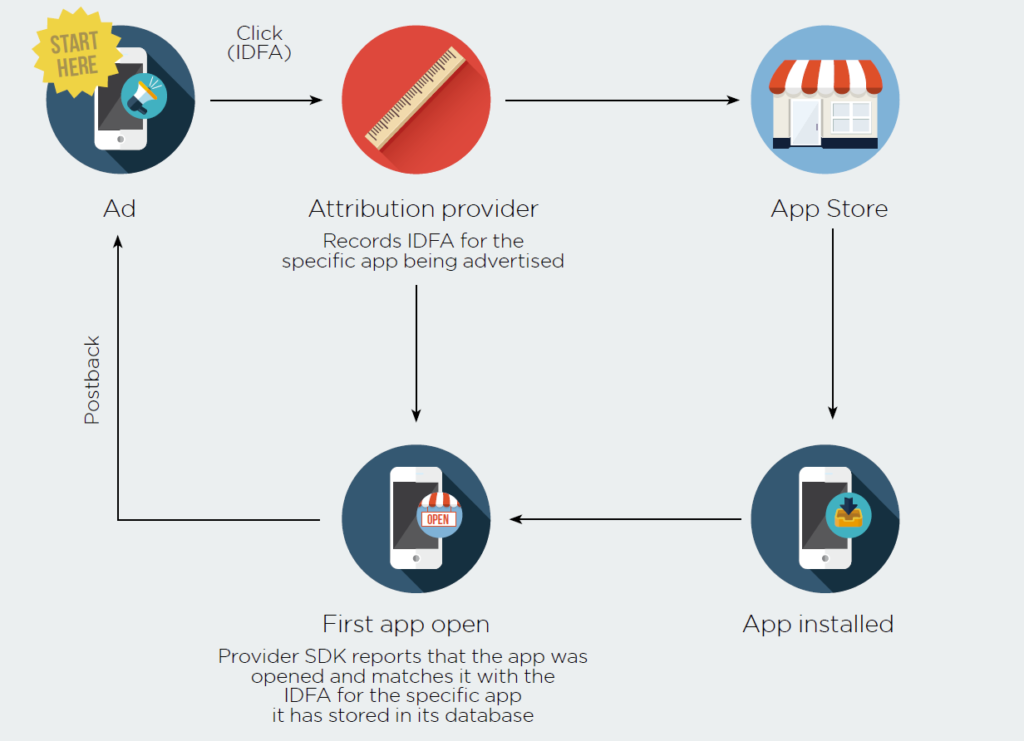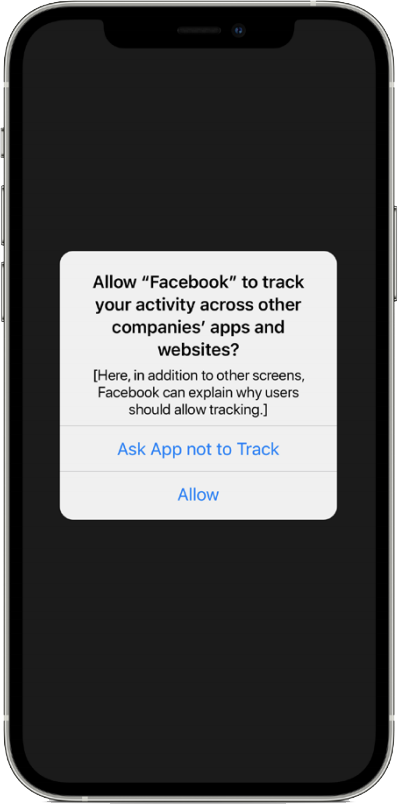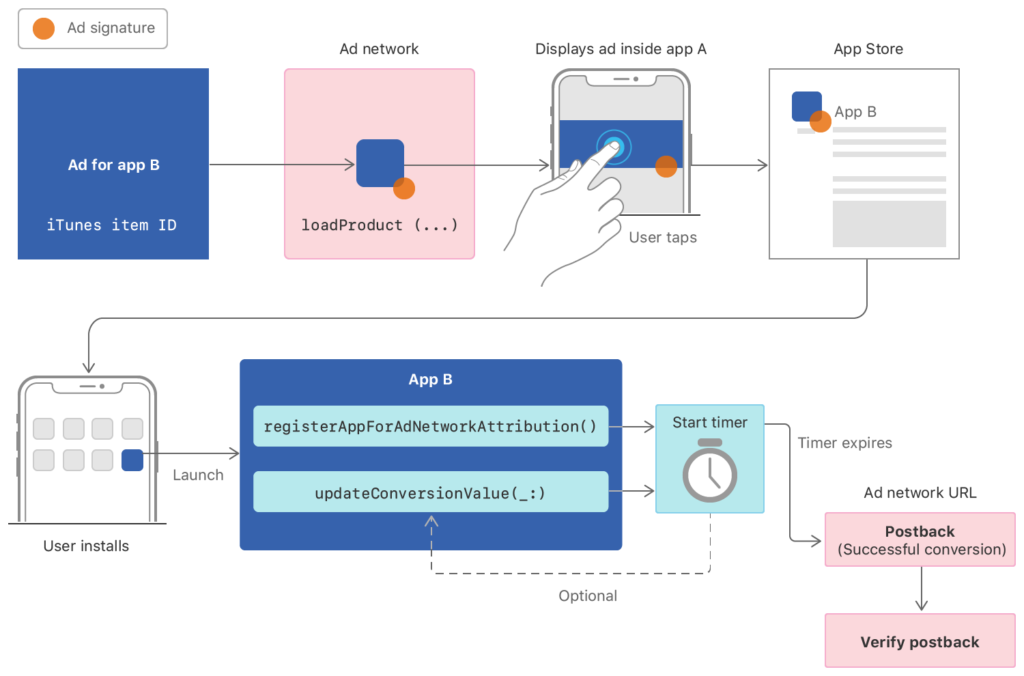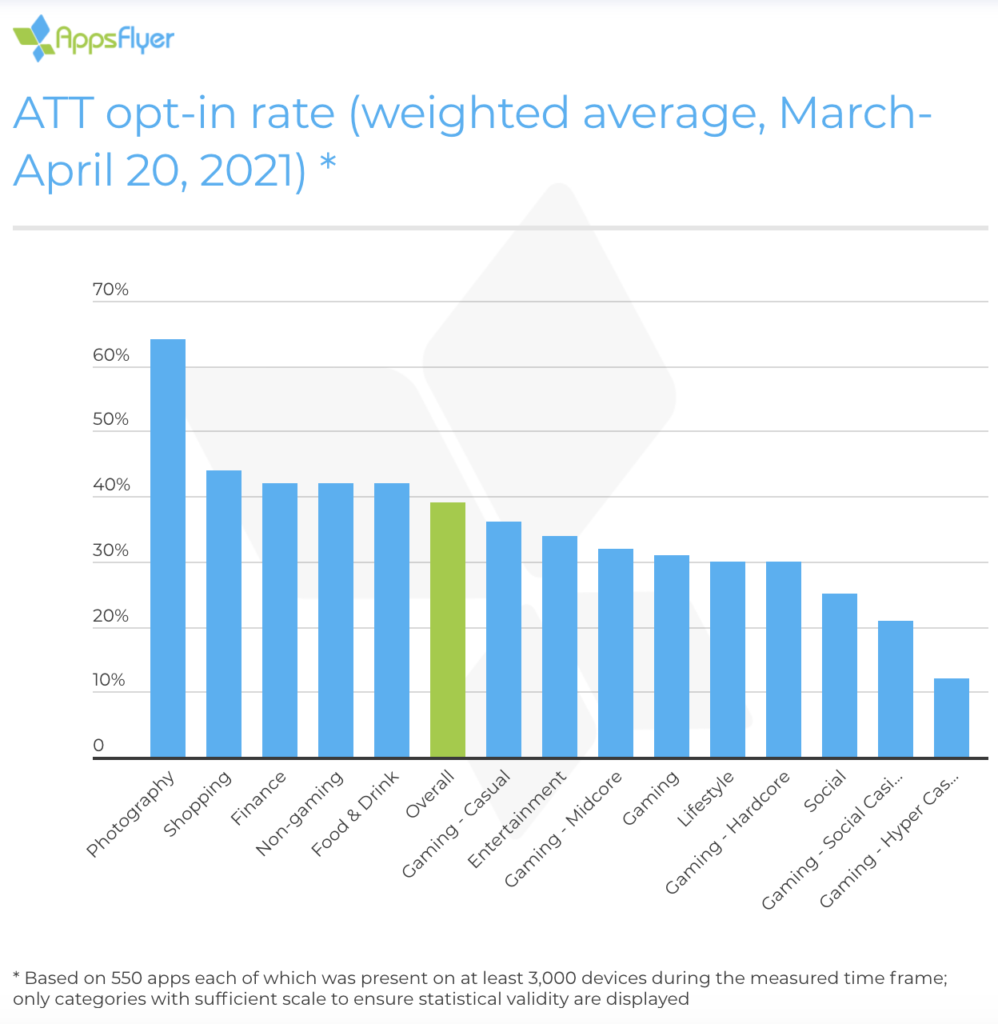There was a lot of uncertainty as to when Apple’s IDFA changes in iOS 14 would come into effect – and now we know. It’s been 10 months since Apple’s first announcement about the iOS 14 App Tracking Transparency framework (ATT) and after last week’s April Event ‘Spring Loaded’ they finally revealed when we can expect it. From the 26th of April, these new rules will apply: ‘With the upcoming public release of iOS 14.5, iPadOS 14.5, and tvOS 14.5, all apps must use the AppTrackingTransparency framework to request the user’s permission to track them or to access their device’s advertising identifier’ (Apple).
When AppsFlyer asked our CEO Christian Eckhardt and fellow industry experts when they thought Apple would launch ATT, Christian proved to be the closest with his guess of ‘within 2021’. Many in the industry had been expecting Apple to choose the 1st of April – it only seemed right. But that wasn’t the case.
Apple had postponed enforcing its IDFA restrictions in iOS 14 twice, meaning the industry had a little extra time to prepare and adjust to the challenges this change would bring. It would require major structural adjustments as to how they acquire users and monetise. Many advertisers were preparing for the worst.
This article doesn’t aim to go through every detail about the latest developments – a lot of them are still undetermined anyway. Pre-ATT there was a lot of speculation as to what the industry would look like in an after-ATT world. Only time and real, valid generated data will tell.
But rather we want to give you a better idea of where the advertising industry is heading with the new ATT and its implications for mobile marketing.
The IDFA – Standard for paid marketing on iOS since 2012
In September 2012, Apple released iOS 6 which meant they could start tracking users so that advertisers could target them through a new tracking technology called IFA or IDFA. IFA or IDFA stands for ‘The Identifier for Advertisers’ and is a random device identifier assigned by Apple to a user’s device (Adjust). It is used for tracking and identifying a user (without revealing personal information). The data generated is extremely valuable: it can be used to match a user across many apps and ad networks – from ad to in-app activity (e.g. purchase). It can also retarget users with advertising and create lookalike audiences of the best users. In short, the IDFA is a huge help to mobile marketers for two reasons: 1.) attribution – to measure their advertising and 2.) (re)targeting with customised ads.

IDFAs are one of the most precise ways to track a mobile advertising campaign on iOS, but there has always been an option to opt-out and as privacy issues have been rising over time, more users have made use of this.
Apple made sure to offer its users a way to not get tracked. With the so-called ‘limit ad tracking’ (LAT), users can opt-out and their user information will be shown as blank. For mobile marketers, this means they can’t show those users targeted ads. When LAT is switched on, attribution and conversion events (among other features) are switched off. As it stands, roughly 20% of iOS users cannot be tracked using the IDFA because they have enabled LAT (Adjust).
Now, with Apple’s new ATT requirements, every app needs to request user consent to track their users’ data upfront via a pop-up message within the app. This could look something like this:

Understandably, the advertising industry held its breath when Apple first announced the changes. They expected the worst, anticipating that the current 70% opt-in rate would drastically drop. ‘The IDFA is dead’ was born.

Implications for mobile marketing
With the IDFA, mobile marketers have the opportunity to attribute ad spend. Together with a mobile measurement partner (MMP), app companies can connect a click on an ad with an eventual app install on a specific device. As a result, mobile marketers know that an ad worked and that whatever ad network they used for it was successful (Forbes). Without the IDFA, it’s hard to make such conclusions as paid media attribution insights would be missing – owned/non-paid media would be an exception.
In response to the attribution problem, Apple is offering their own aggregated solution: their SKAdNetwork – the ATT-compliant attribution method.
SKAdNetwork is Apple’s privacy-friendly way to attribute impressions and clicks to app installs on iOS apps. Conversion data gets shared with advertisers without revealing any user-level or device-level data (Digiday). Here’s a graphic from Apple in which they outline the process of conversion tracking.

Looks complicated? Well, it is… We’re not going to cover the individual steps in this blog article but if you want to know more about it, feel free to contact us at [email protected].
Let’s focus on the practical side and what mobile marketers gain from SKAdNetwork and in which ways they’re limited by it.
The upside of SKAD: Even though it’s not as granular, it offers real insights into user behaviour on an aggregated level and it works for all users (opt-in, opt-out – LAT on or off) while maintaining privacy. As mentioned before, no user-level data gets exposed.
The downsides: SKAD has a lot of limitations, such as:
- Measurement of install attribution only
- Limited reporting granularity
- Limited post-install conversion values
- Limited numbers of campaigns per app
- Complex data forwarding scheme
- Follows the last-click attribution schema
- Marketers only get a partial real-time attribution feed (there will always be a minimum 24-hour period between an install and the postback to the attributed ad network)
- Higher risk of fraud (due to a lack of data & control)
The main challenge is how complicated it is to maintain the new setup to track campaign success (conversion values). Furthermore, if app publishers and advertisers decide to show the opt-in, they would now have to account for two user groups with opt-in and opt-out. They have to run two parallel systems – SKAD and ‘regular’ attribution for IDFA opt-in users. If that weren’t difficult enough, Apple Search Ads also has its own ‘The Apple Search Ads Attribution API’ which, as a first-party ad offering from Apple, offers a higher granularity of reporting than SKAdNetwork. This means that SKAdNetwork is a good solution but not a ‘one size fits all’.
It’s also worth noting that Apple may expand its own advertising business with new placements, so marketers are well-advised to pay increased attention to marketing within the App Store in their strategy.
Here’s a checklist of what you can do to stay ahead of the game:
Make the most out of now (two dimensions: UA & Retargeting):
- Procrastinating and thinking about somehow reacting to Apple’s ATT and the IDFA changes won’t work. You need to adapt your app according to the App Store guidelines (there is a chance that you’ll get kicked out of the App Store if you don’t follow their new rules).
- Align with all parties involved on the best strategy for your app. This includes the crucial decision as to whether you still want to use the IDFA or not.
- Regardless of whether you still want to use it or not, support the SKAdNetwork implementation. Update your SDKs (MMP, Facebook, Firebase, etc.), SKAdNetwork and Apple Search Ads Framework.
- Check your advertising partner’s readiness for SDKadNetwork as they also play an important role.
- If you choose to ask users for IDFA via the prompt, define your strategy to ask for consent. Be experimental on prompts – design a persuasive pre-permission prompt and test design, messaging and timing for the trigger to draw your own conclusions for ideal ATT opt-in rates. Find more about UX strategies and A/B testing in Adjust’s guide for mobile marketing in iOS 14.
- Optimise with an IDFA alternative. Start collecting IDFV (The Identifier for Vendors) through your mobile measurement partner for deterministic attribution on cross-app promotion.
- When using SKAdNetwork, plan your strategy for which conversion model to pick. ATT changes the whole paradigm of optimisation via in-app events that IDFA used to enable for advertisers.
Instead – when working with SKAdNetwork – you need to decide on a conversion model and you can only choose one of the following:
1.) Highest value event
2.) Revenue
3.) User journey
4.) Engagement
However, there are methods to get the most out of SKAdNetwork Conversion Values. AppsFlyer explains some of them in this video.
We highly recommend consulting with experts on this important topic. We can’t cover all the factors to consider in this blog article as it would simply be too long. Please reach out to our campaign managers via [email protected] if you want to find out which conversion model is best for your app.
- Create your SKAdNetwork campaigns. Make sure you check your partner’s campaign number limit, this particularly concerns big brands operating in the international market. Also, keep in mind that performance data is only provided for the entire campaign.
- Re-evaluate your tech stack with a focus on BI. Whether you get user consent or not, the IDFA changes will impact how your BI stack functions. With your team, be sure to restructure how you model your data.
Think ahead and prepare for the long-term (two dimensions: UA & Retargeting):
- Find your own way to deal with limited granularity and available data. Invest in knowledge and collect your own data with alternative ways to advertise efficiently, such as:
- Getting to know your target group better, understand their needs by simply asking them what they want. This can include ‘old school’ techniques, such as qualitative user research that can deliver valuable insights
- Take insights from historical data
- Use learnings from Android
- Media mix modelling
- Incrementality
- As UA gets more difficult, make better use of existing users through channels such as newsletters & email promotions (with user consent of course), your website and other owned channels.
- Rethink user acquisition strategies by thinking outside the box. This change will affect the whole mobile marketing landscape and it will bring with it new opportunities on other UA sources, such as expected lower CPMS. However, with many ad networks not being SKAdNetwork-ready and the current situation of uncertainty, it can be risky to experiment with too many new channels. You need to understand and test your metrics in this new paradigm first, ideally with channels that you already know will work.
- Define new metrics for paid media that indicate success. Focus on top-funnel events like installs, registrations, sign-ins and first engagement.
- When targeting gets broader, experiment with different ad creatives to give you an edge in finding the right audience. You have full control over your ad creatives – you are deciding what you share, whereas ad networks decide which users are shown your ads. Use the chance to provide ad creatives for broader audiences (limited targeting) because this can be used to qualify traffic (attract the right type of users) before converting them. Here you can find out more about this strategy.
‘Is the IDFA dead’ – Yes, No, Maybe
So let’s have a closer look at the idea that ‘The IDFA is dead’. Did Apple really kill a whole industry?
Yes! For users, it isn’t obvious why they should give their consent. Data privacy is a top issue for many, so users will tend to click ‘no’ when it’s to do with their data being shared with anyone if it isn’t required.
SKAD is an alternative that’s good enough – you could argue that you don’t need the IDFA anymore. For some apps, the best strategy could be not collecting opt-ins for IDFA at all. This will save users from having to take the decision and getting an annoying popup.
No! As the industry was rapidly trying to prepare itself for the IDFA changes, many apps and their attribution partners were testing prompts to see whether users would give their consent to be tracked across apps and websites. The results were not as bad as first thought. According to a recent study from AppsFlyer, the initial data indicates that the ATT opt-in rates were at least 39%. An important factor that has an impact on the opt-in rate is the strength of the brand. Strong brands will have the advantage that their (loyal) users trust them and worry less about sharing their data with them.

Maybe. The IDFA is only useful and effective when users opt-in to both apps (advertiser/publisher). A lot of the success of opt-ins depends on the user’s willingness to opt-in with the biggest publishers first, namely Google and Facebook – something Eric Seufert points out in a recent article. If Facebook gets a decent opt-in rate for its products, then app developers who achieve high opt-ins will benefit.
So, it isn’t over yet for the IDFA.

Data privacy isn’t new
Data privacy is a user’s right and this isn’t something new. Users have always had the right to control their data. Many, however, simply don’t know what it means or how to do it. They wouldn’t think twice before giving their consent to share information that apps request. This is now likely to change with a clear question that explicitly asks them to opt-in.
But what is important is that data privacy isn’t something new. Data privacy concerns have increased lately due to numerous public data protection scandals and consumers have started to seek transparency about what data they are sharing with companies. Even before Apple announced its IDFA changes, many companies focused on data privacy and prioritised it. You can find trusted partners who understand the importance of data privacy and still know how to achieve success with data-driven marketing. Especially in the EU, where there is a high privacy sensitivity which is reflected in the GDPR (General Data Protection Regulation).
As a leading mobile technology and marketing consultancy based in Germany, we at Customlytics know the industry and assure the highest data privacy standards to all our clients. In this blog article for Business of Apps, we share tips on how to adapt your marketing strategy to be data compliant.
So, in a nutshell, this is what we advise app companies to do to prepare their app for iOS 14.5. As mentioned earlier, there’s no ‘one’ answer to this and there’s a lot that we have purposefully left out of this blog to make this complex topic accessible to everyone.
If you are currently facing the challenge of handling Apple’s IDFA changes for your app and need support with the technical requirements, don’t hesitate to contact us via [email protected]. Our team has constantly been working with our clients’ apps to prepare them for iOS 14.5 and the changes it will bring. They’ve gained relevant experience in all different areas to support you in these challenging times.
💡 Knowledge sharing is at the core of what we do. Stay up to date with the current developments regarding Apple’s ATT and its implications for the mobile industry by signing up to our App Marketing newsletter.






